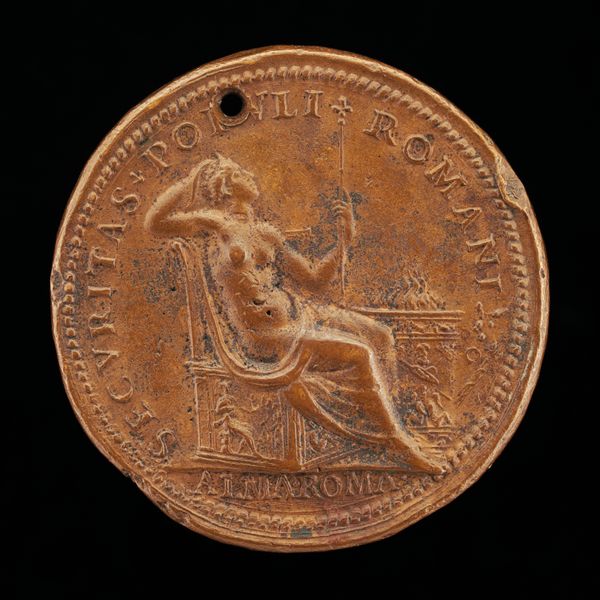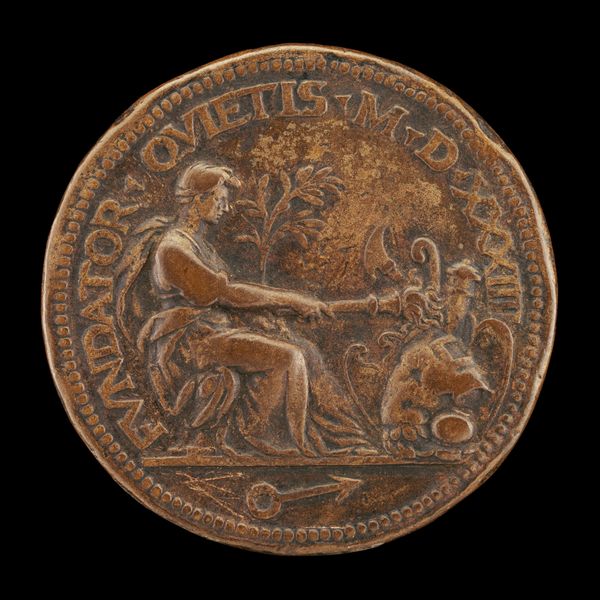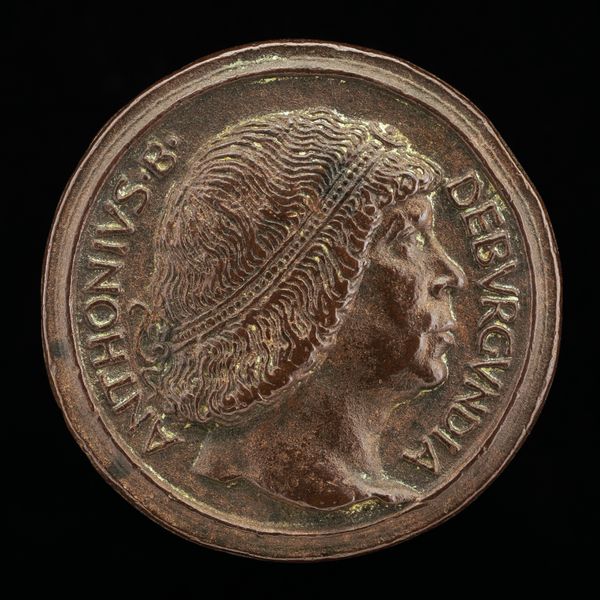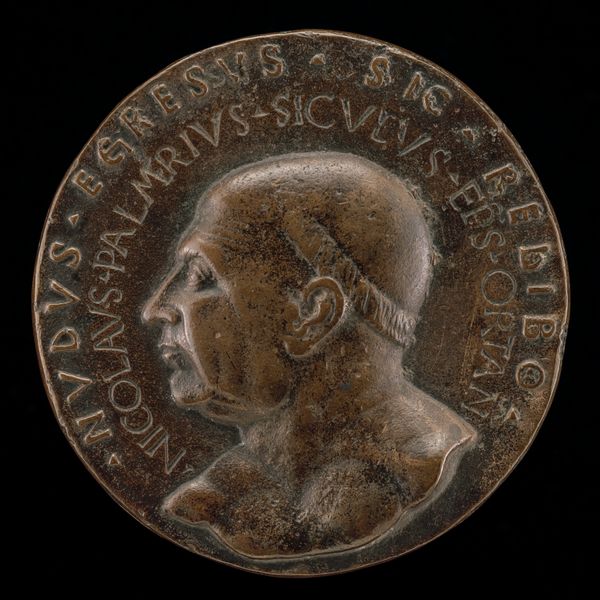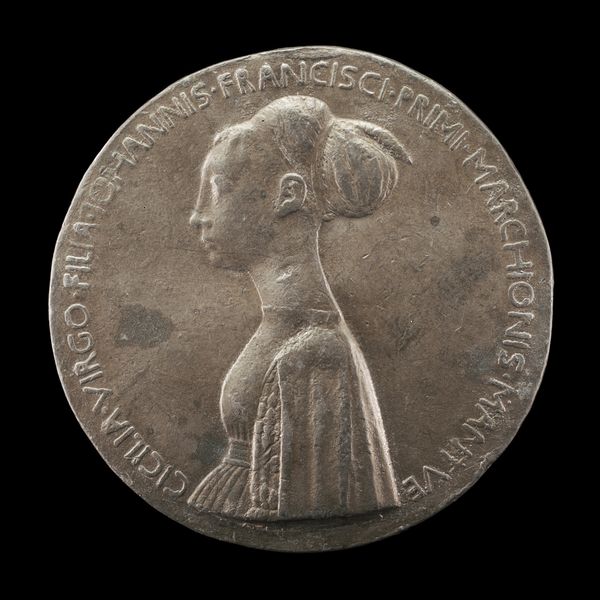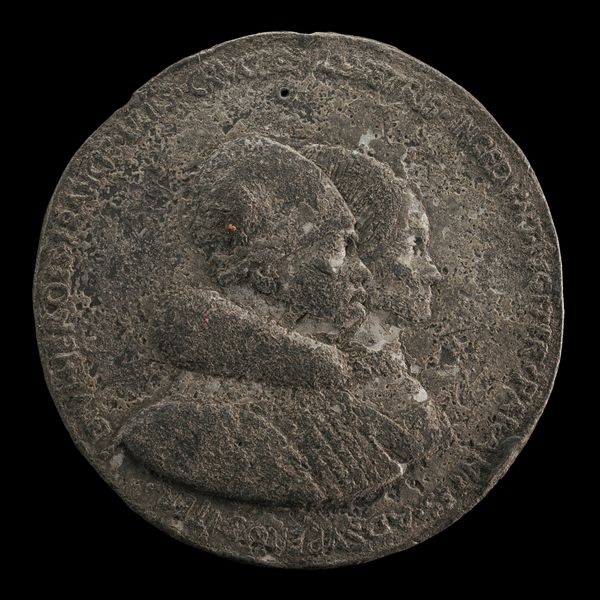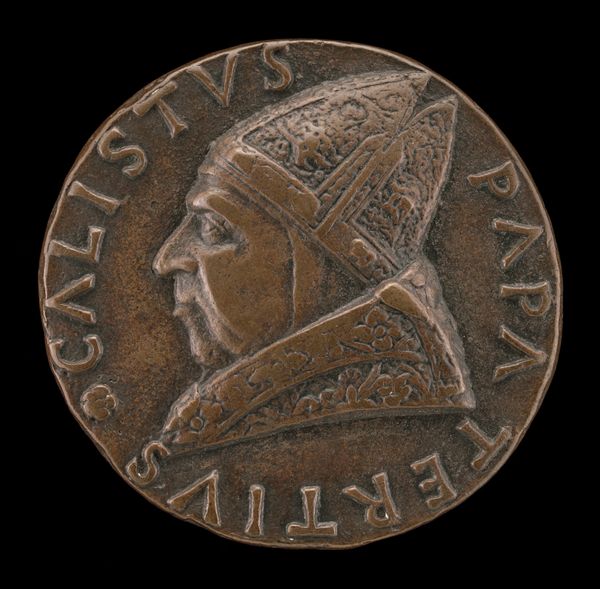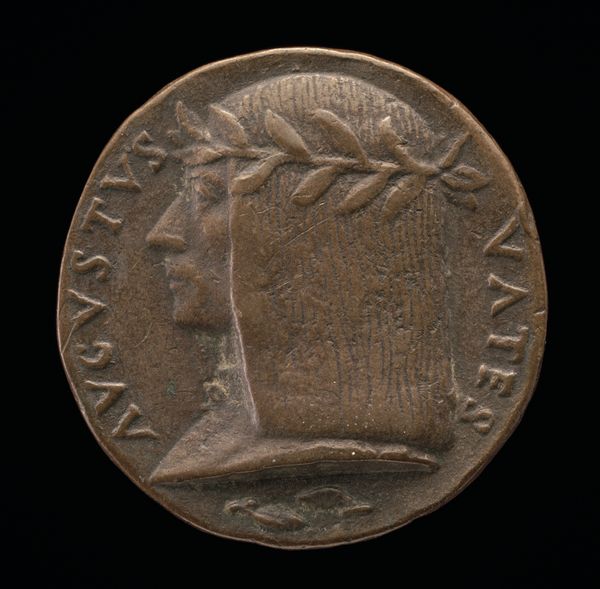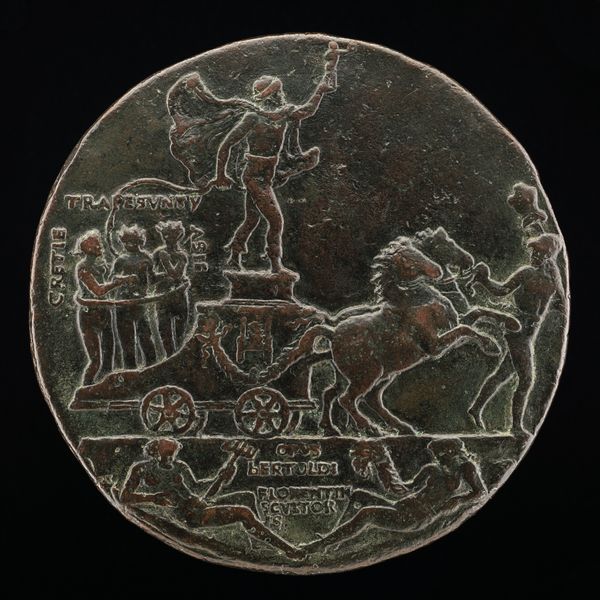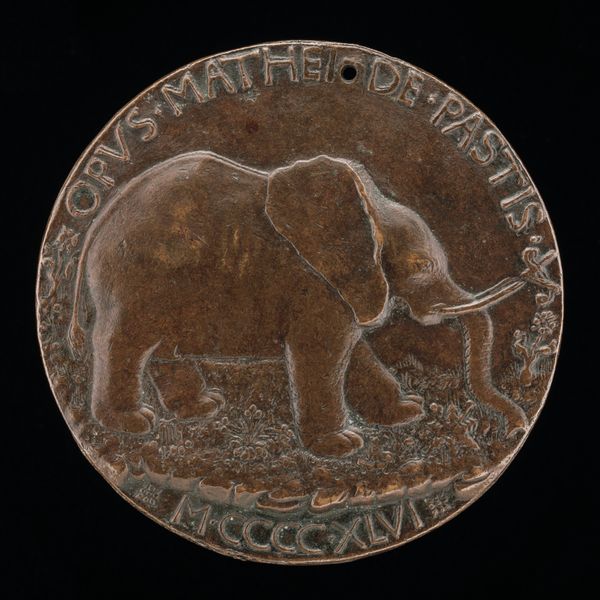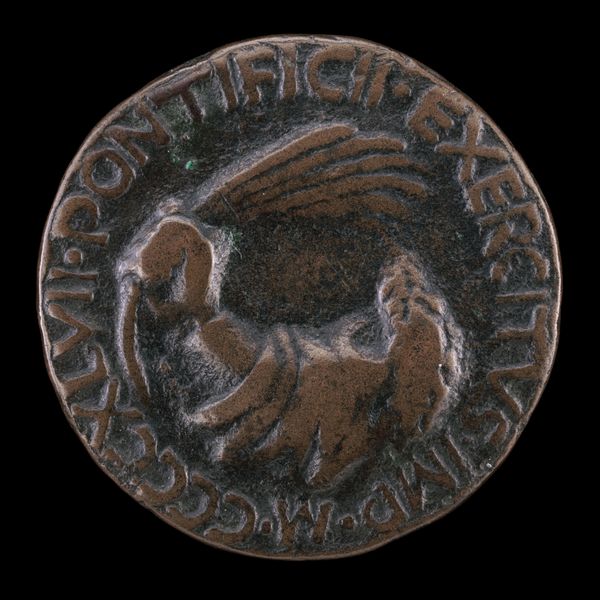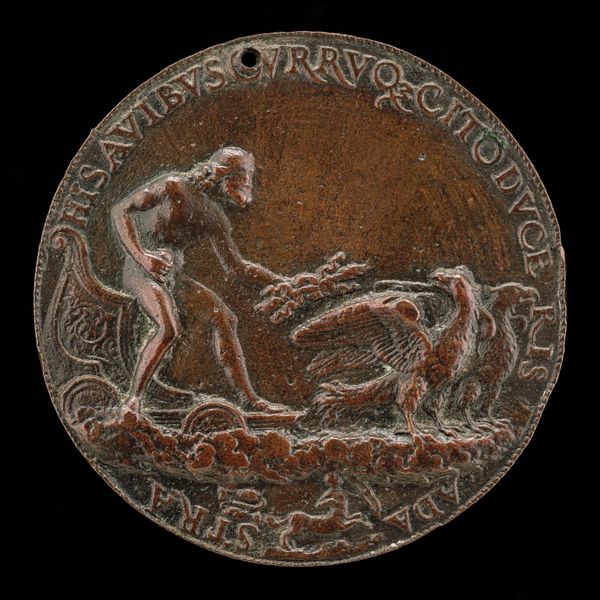![Charger, Books, and Sword [reverse] by Pisanello](/_next/image?url=https%3A%2F%2Fd2w8kbdekdi1gv.cloudfront.net%2FeyJidWNrZXQiOiAiYXJ0ZXJhLWltYWdlcy1idWNrZXQiLCAia2V5IjogImFydHdvcmtzLzM1MzY4MjM3LTk0NjctNGE0My04NGZiLTc5ODJiNmVmODVhZi8zNTM2ODIzNy05NDY3LTRhNDMtODRmYi03OTgyYjZlZjg1YWZfZnVsbC5qcGciLCAiZWRpdHMiOiB7InJlc2l6ZSI6IHsid2lkdGgiOiAxOTIwLCAiaGVpZ2h0IjogMTkyMCwgImZpdCI6ICJpbnNpZGUifX19&w=3840&q=75)
relief, bronze, sculpture
#
portrait
#
medal
#
animal
#
stone
#
sculpture
#
relief
#
bronze
#
sculpture
#
history-painting
#
italian-renaissance
Dimensions: overall (diameter): 8.67 cm (3 7/16 in.) gross weight: 274.28 gr (0.605 lb.) axis: 12:00
Copyright: National Gallery of Art: CC0 1.0
Curator: Let's explore this bronze relief, "Charger, Books, and Sword," created by Pisanello around 1441. Editor: It has such a stark feel to it. I'm immediately drawn to the material; the way the bronze has aged, the relief almost seems worn smooth. It makes me wonder about the hands that crafted and the hands that have held it over the centuries. Curator: Precisely. Medals like these were deeply embedded in Renaissance court culture. Pisanello was renowned for them, and they acted as both portraiture and powerful symbols of status and cultural affiliation. The materiality itself – bronze casting – speaks to the revival of classical techniques and aspirations of power associated with antiquity. Editor: You can really see how that aspiration comes through in the combination of items featured in the medallion; a charger or warhorse, stacked books and the blade of a sword. All these different mediums pointing to something very tangible in society. How the symbolism connects, what messages are crafted here for others to digest. Curator: Yes, consider how this assemblage of a warhorse alongside books and a sword reflects the multifaceted identity that Renaissance figures wanted to project – blending military prowess, intellectual pursuits, and aristocratic power. The horse was also seen to symbolize power, virility and nobility and therefore reserved only for the elite classes. Editor: It also shows how medals move beyond being merely decorative objects. It makes me consider who would have had access to it and who this would have appealed to the most? Curator: Likely gifted by aristocratic families to important dignitaries and persons to ensure loyalty, as well as for the self-commemoration of noble and powerful figures of Renaissance society. Editor: Examining Pisanello's artistic methods and materials deepens our insight of the socio-economic networks, status-defining symbols, and the artistic license involved. Curator: Indeed, reflecting on its place within the history of artistic patronage reveals much about how images were used to construct and convey political messages and individual identities during this fascinating time.
Comments
No comments
Be the first to comment and join the conversation on the ultimate creative platform.
